Secularity (adjective form secular, from Latin saecularis meaning "worldly" or "temporal") is the state of being separate from religion, or of not being exclusively allied with or against any particular religion.
For instance, one can regard eating and bathing as examples of secular activities, because there may not be anything inherently religious about them. Nevertheless, some religious traditions see both eating and bathing as sacraments, therefore making them religious activities within those world views. Saying a prayer derived from religious text or doctrine, worshipping through the context of a religion, and attending a religious school are examples of religious (non-secular) activities.
A related term, "secularism", involves the principle that government institutions and their representatives should remain separate from religious institutions, their beliefs, and their dignitaries. Most businesses and corporations, and some governments, operate on secular lines.
● Religion
A religion is a cultural system of behaviors and practices, world views, ethics, and social organisation that relate humanity to an order of existence. 84% of the world's population is affiliated with one of the five largest religions, namely Christianity, Islam, Hinduism, Buddhism or folk religion.
The scientific study of religions encompasses a wide variety of academic disciplines, including comparative religion and social scientific studies. Theories of religion offer explanations for the origins and workings of religion.
With the onset of the modernisation of and the scientific revolution in the western world, some aspects of religion have cumulatively been criticized. Though non-religion has been rising in the west, they are still a minority in the region and globally many who are not affiliated with a religion still have various religious beliefs. Related aspects are health, morality and violence.

Lyman Frank Baum (May 15, 1856 – May 6, 1919), better known by his pen name L. Frank Baum, was an American author chiefly known for his children's books, particularly The Wonderful Wizard of Oz. He wrote thirteen novel sequels, nine other fantasy novels, and a host of other works (55 novels in total, plus four "lost works", 83 short stories, over 200 poems, an unknown number of scripts, and many miscellaneous writings), and made numerous attempts to bring his works to the stage and screen. His works anticipated such century-later commonplaces as television, augmented reality, laptop computers (The Master Key), wireless telephones (Tik-Tok of Oz), women in high risk, action-heavy occupations (Mary Louise in the Country), and the ubiquity of advertising on clothing (Aunt Jane's Nieces at Work).

The Wonderful Wizard of Oz is an American children's novel written by author L. Frank Baum and illustrated by W. W. Denslow, originally published by the George M. Hill Company in Chicago on May 17, 1900. It has since been reprinted on numerous occasions, most often under the title The Wizard of Oz, which is the title of the popular 1902 Broadway musical as well as the iconic 1939 musical film adaptation.
The story chronicles the adventures of a young farm girl named Dorothy in the magical Land of Oz, after she and her pet dog Toto are swept away from their Kansas home by a cyclone. The novel is one of the best-known stories in American literature and has been widely translated. The Library of Congress has declared it "America's greatest and best-loved homegrown fairytale." Its groundbreaking success and the success of the Broadway musical adapted from the novel led Baum to write thirteen additional Oz books that serve as official sequels to the first story.
Plot Summary
Dorothy is a young girl who lives with her Aunt Em and Uncle Henry and her little dog Toto on a Kansas farm. One day, Dorothy and Toto are caught up in a cyclone that deposits her farmhouse into Munchkin Country in the magical Land of Oz. The falling house has killed the Wicked Witch of the East, the evil ruler of the Munchkins. The Good Witch of the North arrives with the grateful Munchkins and gives Dorothy the magical Silver Shoes that once belonged to the witch. The Good Witch tells Dorothy that the only way she can return home is to go to the Emerald City and ask the great and powerful Wizard of Oz to help her. As Dorothy embarks on her journey, the Good Witch of the North kisses her on the forehead, giving her magical protection from harm.
On her way down the yellow brick road, Dorothy attends a banquet held by a Munchkin man named Boq. The next day, Dorothy frees the Scarecrow from the pole on which he is hanging, applies oil from a can to the rusted connections of the Tin Woodman, and meets the Cowardly Lion. The Scarecrow wants a brain, the Tin Woodman wants a heart, and the Cowardly Lion wants courage, so Dorothy encourages the three of them to journey with her and Toto to the Emerald City to ask for help from the Wizard. After several adventures, the travelers enter the gates of the Emerald City and meet the Guardian of the Gates, who asks them to wear green tinted spectacles to keep their eyes from being blinded by the city's brilliance. Each one is called to see the Wizard: Dorothy sees the Wizard as a giant head on a marble throne, the Scarecrow as a lovely lady in silk gauze, the Tin Woodman as a terrible beast, the Cowardly Lion as a ball of fire. The Wizard agrees to help them all if they kill the Wicked Witch of the West, who rules over Oz's Winkie Country. The Guardian warns them that no one has ever managed to defeat the witch.
The Wicked Witch of the West sees the travelers approaching with her one telescopic eye. She sends a pack of wolves to tear them to pieces, but the Tin Woodman kills them with his axe. She sends wild crows to peck their eyes out, but the Scarecrow kills them by breaking their necks. She summons a swarm of black bees to sting them, but they are killed trying to sting the Tin Woodman while the Scarecrow's straw hides the other three. She sends her Winkie soldiers to attack them, but the Cowardly Lion stands firm to repel them. Finally, she uses the power of the Golden Cap to send the winged monkeys to capture Dorothy, Toto, and the Cowardly Lion, unstuff the Scarecrow, and dent the Tin Woodman. Dorothy is forced to become the Wicked Witch's personal slave, while the witch schemes to steal Dorothy's Silver Shoes.
The Wicked Witch successfully tricks Dorothy out of one of her Silver Shoes. Angered, Dorothy throws a bucket of water at her and is shocked to see the witch melt away. The Winkies rejoice at being freed of the witch's tyranny and help restuff the Scarecrow and mend the Tin Woodman. They ask the Tin Woodman to become their ruler, which he agrees to do after helping Dorothy return to Kansas. Dorothy finds the Golden Cap and summons the Winged Monkeys to carry her and her companions back to the Emerald City. The King of the Winged Monkeys tells how he and the other monkeys are bound by an enchantment to the cap by the sorceress Gayelette from the North, and that Dorothy may use the cap to summon the Winged Monkeys two more times.
When Dorothy and her friends meet the Wizard of Oz again, Toto tips over a screen in a corner of the throne room that reveals the Wizard. He sadly explains he is a humbug—an ordinary old man who, by a hot air balloon, came to Oz long ago from Omaha. The Wizard provides the Scarecrow with a head full of bran, pins, and needles ("a lot of bran-new brains"), the Tin Woodman with a silk heart stuffed with sawdust, and the Cowardly Lion a potion of "courage". Their faith in the Wizard's power gives these items a focus for their desires. The Wizard decides to take Dorothy and Toto home and leave the Emerald City. At the send-off, he appoints the Scarecrow to rule in his stead, which he agrees to do after Dorothy returns to Kansas. Toto chases a kitten in the crowd and Dorothy goes after him, but the tethers of the balloon break and the Wizard floats away.
Dorothy summons the Winged Monkeys to carry her and Toto home, but they explain they cannot cross the desert surrounding Oz. The Soldier with the Green Whiskers informs Dorothy that Glinda the Good Witch of the South may be able to help her return home, so the friends begin their journey to see Glinda, who lives in Oz's Quadling Country. On the way, the Cowardly Lion kills a giant spider who is terrorizing the animals in a forest. The animals ask the Cowardly Lion to become their king, which he agrees to do after helping Dorothy return to Kansas. Dorothy summons the Winged Monkeys a third time to fly them over a mountain to Glinda's palace. Glinda greets the travelers and reveals that the Silver Shoes Dorothy wears can take her anywhere she wishes to go. Dorothy embraces her friends, all of whom will be returned to their new kingdoms through Glinda's three uses of the Golden Cap: the Scarecrow to the Emerald City, the Tin Woodman to the Winkie Country, and the Lion to the forest; after which the cap shall be given to the King of the Winged Monkeys, freeing them. Dorothy takes Toto in her arms, knocks her heels together three times, and wishes to return home. Instantly, she begins whirling through the air and rolling through the grass of the Kansas prairie, up to her Kansas farmhouse. Dorothy runs to her Aunt Em, saying "I'm so glad to be at home again!"

Valentin Louis Georges Eugène Marcel Proust was a French novelist, critic, and essayist best known for his monumental novel À la recherche du temps perdu (In Search of Lost Time; earlier translated as Remembrance of Things Past), published in seven parts between 1913 and 1927. He is considered by many to be one of the greatest authors of all time.
Remembrance of Things Past is a novel in seven volumes by Marcel Proust (1871–1922). His most prominent work, it is known both for its length and its theme of involuntary memory, the most famous example being the "episode of the madeleine" which occurs early in the first volume. It gained fame in English in translations by C. K. Scott Moncrieff and Terence Kilmartin as Remembrance of Things Past, but the title In Search of Lost Time, a literal rendering of the French, has gained usage since D. J. Enright adopted it for his revised translation published in 1992.
The novel began to take shape in 1909. Proust continued to work on it until his final illness in the autumn of 1922 forced him to break off. Proust established the structure early on, but even after volumes were initially finished he kept adding new material and edited one volume after another for publication. The last three of the seven volumes contain oversights and fragmentary or unpolished passages, as they existed only in draft form at the death of the author; the publication of these parts was overseen by his brother Robert.

"Over the Rainbow" (often referred to as "Somewhere Over the Rainbow") is a ballad, with music by Harold Arlen and lyrics by E.Y. Harburg.It was written for the 1939 movie The Wizard of Oz, and was sung by actress Judy Garland in her starring role as Dorothy Gale. The song won the Academy Award for Best Original Song and became Garland's signature song, as well as one of the most enduring standards of the 20th century.
About five minutes into the film, Dorothy sings the song after failing to get her aunt and uncle to listen to her relate an unpleasant incident involving her dog, Toto, and the town spinster, Miss Gulch. Dorothy's Aunt Em tells her to "find yourself a place where you won't get into any trouble." This prompts Dorothy to walk off by herself, musing to Toto, "'Some place where there isn't any trouble.' Do you suppose there is such a place, Toto? There must be. It's not a place you can get to by a boat, or a train. It's far, far away. Behind the moon, beyond the rain..." at which point she begins singing.
Lyrics
Somewhere Over The Rainbow
Somewhere over the rainbow, way up high.
There's a land that I heard of
Once in a lullaby.
Somewhere over the rainbow, skies are blue.
And the dreams that you dare to dream
Really do come true.
Someday I'll wish upon a star and
Wake up where the clouds are far
Behind me.
Where troubles melt like lemon drops,
away above the chimney tops.
That's where you'll find me.
Somewhere over the rainbow,bluebirds fly.
Birds fly over the rainbow.
Why,then,why can't I?
If happy little bluebirds fly beyond the rainbow.
Why, oh, why can't I?

Shirley Temple Black (née Temple; April 23, 1928 – February 10, 2014) was an American film and television actress, singer, dancer, and public servant, most famous as Hollywood's number-one box-office star from 1935 through 1938. As an adult, she entered politics and became a diplomat, serving as United States Ambassador to Ghana and later to Czechoslovakia, and as Chief of Protocol of the United States.
Temple began her film career in 1932 at the age of three. In 1934, she found international fame in Bright Eyes, a feature film designed specifically for her talents. She received a special Juvenile Academy Award in February 1935 for her outstanding contribution as a juvenile performer to motion pictures during 1934, and film hits such as Curly Top and Heidi followed year after year during the mid-to-late 1930s. Licensed merchandise that capitalized on her wholesome image included dolls, dishes, and clothing. Her box-office popularity waned as she reached adolescence. She appeared in a few films of varying quality in her mid-to-late teens, and retired completely from films in 1950 at the age of 22. She was the top box-office draw in Hollywood for four years in a row (1935–38) in a Motion Picture Herald poll.
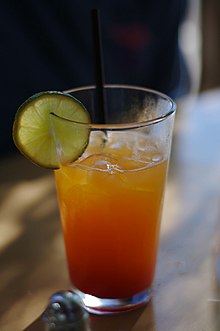
A Shirley Temple is a non-alcoholic mixed drink traditionally made with ginger ale, a splash of grenadine and garnished with a maraschino cherry. Modern Shirley Temple recipes may substitute lemon-lime soda or lemonade and sometimes orange juice in part, or in whole.
Shirley Temples are often served to children dining with adults in lieu of real cocktails, as is the similar Roy Rogers.
The cocktail may have been invented by a bartender at Chasen's, a restaurant in Beverly Hills, California, to serve then child actress Shirley Temple. However, other claims to its origin have been made.
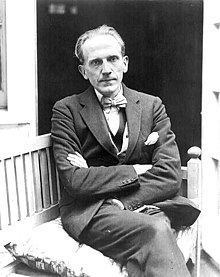
Alan Alexander "A. A." Milne was an English author, best known for his books about the teddy bear Winnie-the-Pooh and for various poems. Milne was a noted writer, primarily as a playwright, before the huge success of Pooh overshadowed all his previous work. Milne served in both World Wars, joining the British Army in World War I, and was a captain of the British Home Guard in World War II.
● Sam Smith - Have Yourself A Merry Little Christmas
Have Yourself A Merry Little Christmas
Have yourself a merry little Christmas,
Let your heart be light
From now on,
our troubles will be out of sight
Have yourself a merry little Christmas,
Make the Yule-tide gay,
From now on,
our troubles will be miles away.
Here we are as in olden days,
Happy golden days of yore.
Faithful friends who are dear to us
Gather near to us once more.
Through the years
We all will be together,
If the Fates allow
Hang a shining star upon the highest bough.
And have yourself A merry little Christmas now.
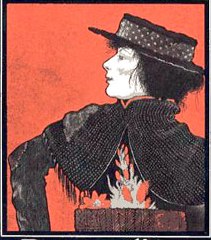
Pygmalion is a play by George Bernard Shaw, named after a Greek mythological character. It was first presented on stage to the public in 1913.
Professor of phonetics Henry Higgins makes a bet that he can train a bedraggled Cockney flower girl, Eliza Doolittle, to pass for a duchess at an ambassador's garden party by teaching her to assume a veneer of gentility, the most important element of which, he believes, is impeccable speech. The play is a sharp lampoon of the rigid British class system of the day and a commentary on women's independence.
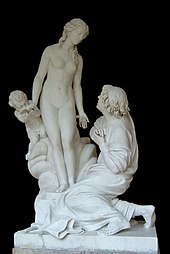
Though Pygmalion is the Greek version of the Phoenician royal name Pumayyaton, he is most familiar from Ovid's narrative poem Metamorphoses, in which Pygmalion was a sculptor who fell in love with a statue he had carved.
In Ovid's narrative, Pygmalion was a Cypriot sculptor who carved a woman out of ivory. According to Ovid, after seeing the Propoetides he was "not interested in women", but his statue was so fair and realistic that he fell in love with it.
In time, Aphrodite's festival day came, and Pygmalion made offerings at the altar of Aphrodite. There, too scared to admit his desire, he quietly wished for a bride who would be "the living likeness of my ivory girl". When he returned home, he kissed his ivory statue, and found that its lips felt warm. He kissed it again, and found that the ivory had lost its hardness. Aphrodite had granted Pygmalion's wish.
The Pygmalion effect, or Rosenthal effect, is the phenomenon whereby higher expectations lead to an increase in performance. The effect is named after the Greek myth of Pygmalion, a sculptor who fell in love with a statue he had carved.
A corollary of the Pygmalion effect is the golem effect, in which low expectations lead to a decrease in performance; both effects are forms of self-fulfilling prophecy. By the Pygmalion effect, people internalize their positive labels, and those with positive labels succeed accordingly. The idea behind the Pygmalion effect is that increasing the leader's expectation of the follower's performance will result in better follower performance. Within sociology, the effect is often cited with regard to education and social class.
Studies of the Pygmalion effect have been difficult to conduct. Results show a positive correlation between leader expectation and follower performance, but it is argued that the studies are done in an unnatural, manipulated setting. Scientists argue that the perceptions a leader has of a follower cause the Pygmalion effect. The leader's expectations are influenced by their perception of the situation or the followers themselves. Perception and expectation may possibly be found in a similar part in the brain.
Though the name "Galatea" has become so firmly associated with Pygmalion's statue as to seem antique, its use in connection with Pygmalion originated with a post-classical writer. No extant ancient text mentions the statue's name. As late as 1763, a sculpture of the subject shown by Falconet at the Paris Salon (illustration) carried the title Pygmalion aux pieds de sa statue qui s'anime ("Pygmalion at the feet of his statue that comes to life"). That sculpture, currently at the Walters Art Museum in Baltimore, now bears the expected modern title Pygmalion and Galatea.
According to Meyer Reinhold, the name "Galatea" was first given wide circulation in Jean-Jacques Rousseau's scène lyrique of 1762, Pygmalion. The name had become a commonplace of pastoral fictions, because of the well known myth of Acis and Galatea; one of Honoré d'Urfé's characters in L'Astrée was a Galatea, though not this sculptural creation.

Bicentennial Man is a 1999 American science fiction comedy-drama film starring Robin Williams, Sam Neill, Embeth Davidtz (in a dual role), Wendy Crewson, and Oliver Platt. Based on the novel The Positronic Man, co-written by Isaac Asimov and Robert Silverberg, which is itself based on Asimov's original novella titled The Bicentennial Man, the plot explores issues of humanity, slavery, prejudice, maturity, intellectual freedom, conformity, sex, love, and mortality. The film, a co-production between Touchstone Pictures and Columbia Pictures, was directed by Chris Columbus. The title comes from the main character existing to the age of two hundred years, and Asimov's novella was published in the year that the U.S. had its bicentennial.
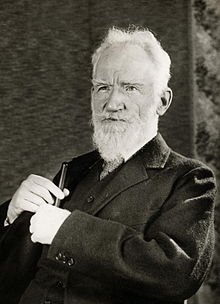
George Bernard Shaw (26 July 1856 – 2 November 1950) was a a Nobel-Prize and Oscar-winning Irish playwright, critic and socialist whose influence on Western theatre, culture and politics stretched from the 1880s to his death in 1950. Originally earning his way as an influential London music and theatre critic, Shaw's greatest gift was for the modern drama. Strongly influenced by Henrik Ibsen, he successfully introduced a new realism into English-language drama. He wrote more than 60 plays, among them Man and Superman, Mrs. Warren's Profession, Major Barbara, Saint Joan, Caesar and Cleopatra, and Pygmalion. With his range from biting contemporary satire to historical allegory, Shaw became the leading comedy dramatist of his generation and one of the most important playwrights in the English language since the 17th century.

My Fair Lady is a 1964 American musical film adaptation of the Lerner and Loewe eponymous stage musical based on the 1938 film adaptation of the original 1913 stage play Pygmalion by George Bernard Shaw. With a screenplay by Alan Jay Lerner and directed by George Cukor, the film depicts a poor Cockney flower seller Eliza Doolittle who overhears an arrogant phonetics professor, Henry Higgins, as he casually wagers that he could teach her to speak "proper" English, thereby making her presentable in the high society of Edwardian London.
The film won eight Academy Awards, including Best Picture, Best Actor, and Best Director.

The Cairn Terrier is one of the oldest of the terrier breeds, originating in the Scottish Highlands and recognized as one of Scotland's earliest working dogs. The breed was given the name cairn, because the breed's function was to hunt and chase quarry between the cairns in the Scottish highlands.
Although the breed had existed long before, the name Cairn Terrier was a compromise suggestion after the breed was originally brought to official shows in the United Kingdom in 1909 under the name Short-haired Skye terriers. This name was not acceptable to The Kennel Club due to opposition from Skye Terrier breeders, and the name Cairn Terrier was suggested as an alternative. They are usually left-pawed, which has been shown in dogs to correlate to superior performance in tasks related to scent. Cairn Terriers are ratters.
In linguistics content words as well as autosemantic are words such as nouns, most verbs, and adjectives that refer to some object, action, or characteristic. Content words contrast with function words, which function primarily to express the grammatical relationships between other words in a sentence. Content words are most often open class words, meaning that new content words can be added to the lexicon easily. In relation to phonology, content words adhere to the minimal word constraint, while function words do not.
The distinction between function/structure words and content/lexical words proposed by C.C. Fries in 1952 has been highly influential in the grammar used in second language acquisition and English Language Teaching. Function words are words that have little lexical meaning or have ambiguous meaning, but instead serve to express grammatical relationships with other words within a sentence, or specify the attitude or mood of the speaker. They signal the structural relationships that words have to one another and are the glue that holds sentences together. Thus, they serve as important elements to the structures of sentences.
● Simile
A simile is a figure of speech that directly compares two things through the explicit use of connecting words (such as like, as, so, than, or various verbs such as resemble). Although similes and metaphors are sometimes considered to be interchangeable, similes acknowledge the imperfections and limitations of the comparative relationship to a greater extent than metaphors. Metaphors are subtler and therefore rhetorically stronger in that metaphors equate two things rather than simply compare them. Similes also safeguard the author against outrageous, incomplete, or unfair comparison. Generally, metaphor is the stronger and more encompassing of the two forms of rhetorical analogies. While similes are mainly used in forms of poetry that compare the inanimate and the living, there are also terms in which similes and personifications are used for humorous purposes and comparison.
● Metaphor
A metaphor is a figure of speech that identifies something as being the same as some unrelated thing for rhetorical effect, thus highlighting the similarities between the two. While a simile compares two items, a metaphor directly equates them, and does not use "like" or "as" as does a simile.
The metaphor category also contains these specialised types:
Allegory: An extended metaphor wherein a story illustrates an important attribute of the subject.
Catachresis: A mixed metaphor used by design and accident (a rhetorical fault).
Parable: An extended metaphor narrated as an anecdote illustrating and teaching such as in Aesop's fables, or Jesus' teaching method as told in the Bible.
Pun: Similar to a metaphor, a pun alludes to another term. However the main difference is that a pun is a frivolous allusion between two different things whereas a metaphor is a purposeful allusion between two different things.
Metaphor, like other types of analogy, can usefully be distinguished from metonymy as one of two fundamental modes of thought. Metaphor and analogy both work by bringing together two concepts from different conceptual domains, whereas metonymy works by using one element from a given domain to refer to another closely related element. Thus, a metaphor creates new links between otherwise distinct conceptual domains, whereas a metonymy relies on the existing links within them.
"Deck the Halls" or "Deck the Hall" (which is the 1877 title) is a traditional Christmas, yuletide, and New Years' carol. The melody is Welsh dating back to the sixteenth century, and belongs to a winter carol, "Nos Galan", while the English lyrics date to 1862.
The English lyrics first appeared (still called "Nos Galan") in volume 2 of Welsh Melodies, a set of four volumes authored by John Thomas with Welsh words by John Jones (Talhaiarn) and English words by the Scottish musician Thomas Oliphant, although the repeated "fa la la" goes back to the original Welsh "Nos Galan" and may originate from medieval ballads. The song is in AABA form. The series Welsh Melodies appears in four volumes, the first two in 1862, the third in 1870 and the final volume in 1874. As can be seen from the translation of "Nos Galan" below, "Deck the Hall(s)" is not a translation but new words by Oliphant to an old song.
Deck the Halls
Deck the hall with boughs of holly,
Tra la la la la la la la la.
'Tis the season to be jolly,
Tra la la la la la la la la.
Fill the meadcup, drain the barrel,
Tra la la la la la la la la.
Troul the ancient Christmas carol,
Tra la la la la la la la la.
See the flowing bowl before us,
Tra la la la la la la la la.
Strike the harp and join the chorus.
Tra la la la la la la la la.
Follow me in merry measure,
Tra la la la la la la la la.
While I sing of beauty's treasure,
Tra la la la la la la la la.
Fast away the old year passes,
Tra la la la la la la la la.
Hail the new, ye lads and lasses!
Tra la la la la la la la la.
Laughing, quaffing all together,
Tra la la la la la la la la.
Heedless of the wind and weather,
Tra la la la la la la la la.
● Let it Snow
Let it Snow
Oh the weather outside is frightful
But the fire is so delightful
And since we've no place to go
Let It Snow! Let It Snow! Let It Snow!
It doesn't show signs of stopping
And I've bought some corn for popping
The lights are turned way down low
Let It Snow! Let It Snow! Let It Snow!
When we finally kiss good night
How I'll hate going out in the storm!
But if you'll really hold me tight
All the way home I'll be warm
The fire is slowly dying
And, my dear, we're still goodbying
But as long as you love me so
Let It Snow! Let It Snow! Let It Snow!
● Vocabulary
spec- stands for to look
e.g. spectular


 留言列表
留言列表


